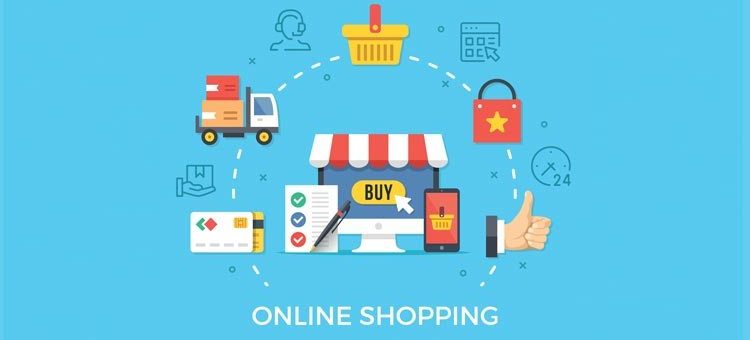Starting an online business in Sri Lanka is as exciting as profitable for the most part. The country holds rapid growth in internet penetration, digital literacy, and e-commerce. It feels like an excellent time to dive into the online business world.
You can choose from e-commerce stores to online services and digital marketing. Likewise, launching an online venture requires planning, legal requirements, and marketing strategies. This guide brings a step-by-step guide on how to start an online business in Sri Lanka.
Step 01 – Choosing a Business Idea
Starting an online business begins with selecting a profitable business idea. It should align with your skills, interests, and market demand.
- E-commerce Store: It’s about selling physical products through an online platform (own website or third-party marketplaces).
- Digital Services: You can offer services like graphic design, writing, web development, online marketing, and/or consulting.
- Affiliate Marketing: Promoting third-party products and earning a commission on sales made through affiliate links.
- Online Courses or Tutoring: You must sell educational courses or online tutoring sessions in subjects like English and coding.
Step 02 – Market Research and Identifying Niche
Market research can help you identify audiences, understand their needs, and assess the competition. It ensures you are entering a market with sufficient demand and fewer barriers to entry.
- Analyze Competitors: Research other businesses with similar products and services. Look at their strengths, weaknesses, reviews, and marketing.
- Target Audience: Define who your ideal customers are based on factors like age, location, income, and interests. For example, selling handmade jewelry makes young professionals in urban areas your potential audience.
- Demand Assessment: Use tools like Google Trends and Facebook Audience Insights to understand what products or services are trending in Sri Lanka.
- Survey Potential Customers: Conduct surveys or interviews with potential customers to understand their pain points and expectations.
Step 03 – Creating a Business Plan
A well-structured business plan is a must-have for success. It effectively outlines your business goals, strategies, and financial projections. The key sections to include in your business plan are –
- Executive Summary: A brief overview of your business idea, mission, and objectives.
- Market Analysis: Insights from research, including customer profiles and competitors.
- Marketing Strategy: How to attract and retain users through digital marketing channels.
- Revenue Model: Identify your income streams (sales, fees, commissions, or advertising).
- Financial Projections: Estimate initial investment, monthly expense, and expected income.
Step 04 – Setting Up Your Online Business Infrastructure
Running a successful online business also requires setting up the right infrastructure. It includes building a website, establishing payment systems, and ensuring smooth operations.
- Domain and Hosting: Choose a unique domain name that reflects your business name. Select a reliable web hosting provider like Host Lanka and Codegen for affordable hosting services.
- Building Your Website: Use WordPress, Shopify, or Wix to create your site. Your chosen business should decide on the platform (Shopify is ideal for e-commerce stores).
- Payment Gateways: Set up payment methods for customers to pay online. Local payment gateways like LankaPay and international options like PayPal are widely employed in Sri Lanka.
- Shipping and Fulfillment (for e-commerce): Partner with reliable courier services (Sri Lanka Post and/or private companies like PickMe and Kapruka) for order fulfilment and deliveries.
Step 05 – Marketing Your Online Business in Sri Lanka
Effective marketing is obligatory for any business, online or not. In Sri Lanka, digital marketing strategies can help you reach a broader audience to build your brand. Some key digital marketing channels are –
- Social Media Marketing: Leverage platforms like Facebook, Instagram, and YouTube. Showcase your products or services to interact with customers and run paid ads.
- Search Engine Optimization (SEO): Optimize your website for search engines like Google to rank higher for relevant keywords. It should help increase organic traffic to your site.
- Email Marketing: Collect email addresses and send newsletters, product updates, or promotional offers. Such marketing is well-known to encourage repeated business sales.
- Influencer Marketing: Collaborate with Lankan influencers to promote your products to their followers. Many local influencers have sizable audiences on Instagram and YouTube.
- Content Marketing: Create informative and accurate blogs, videos, and tutorials about your business niche. It should attract people while engaging many potential customers.
Step 06 – Legal Considerations and Compliance
Always ensure your business complies with the laws and regulations of Lanka. Some key steps include –
- Business Registration: Register your business with the Registrar of Companies when required.
- Tax Compliance: Get a Tax Identification Number (TIN) from the Tax Department and understand the applicable tax rates (VAT).
- Consumer Protection: Adhere to consumer protection laws for maximum transparency and fairness.
Given the country’s growing digital landscape, starting an online business in Sri Lanka can be rewarding. The right business idea can launch and grow your online business in Sri Lanka. The opportunities are vast, whether you’re into e-commerce, digital services, or content creation. However, you must take the time to understand the market, audience, and legal framework.
Related:





